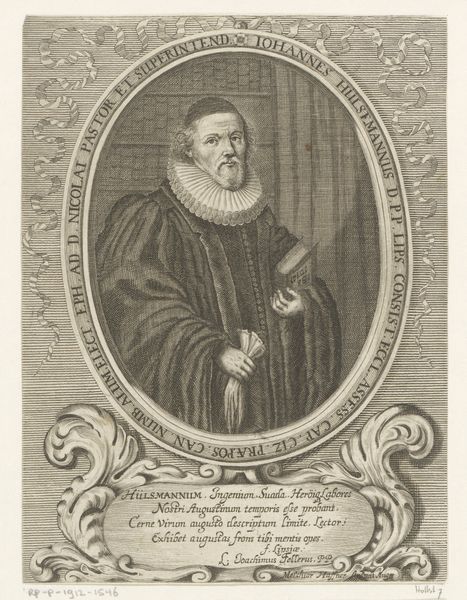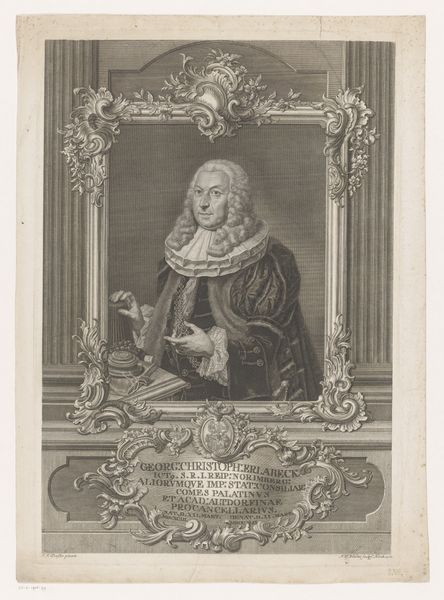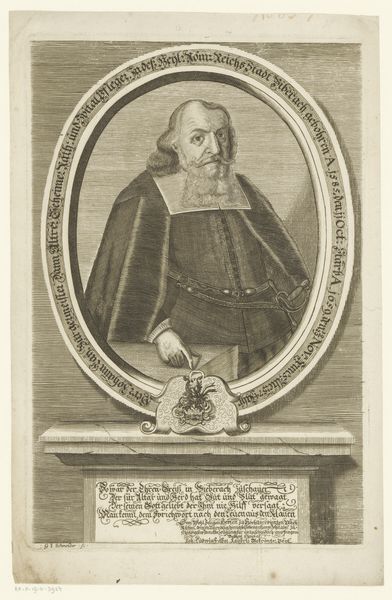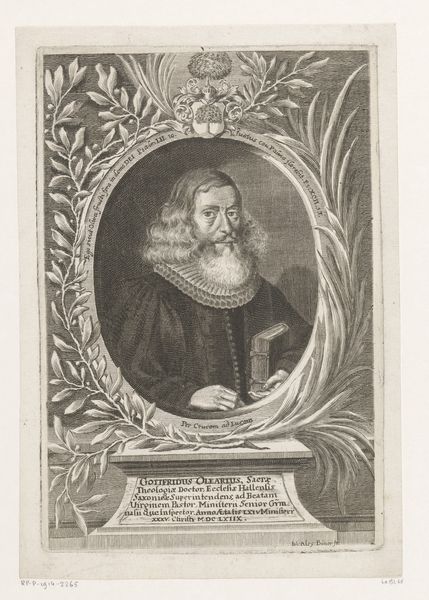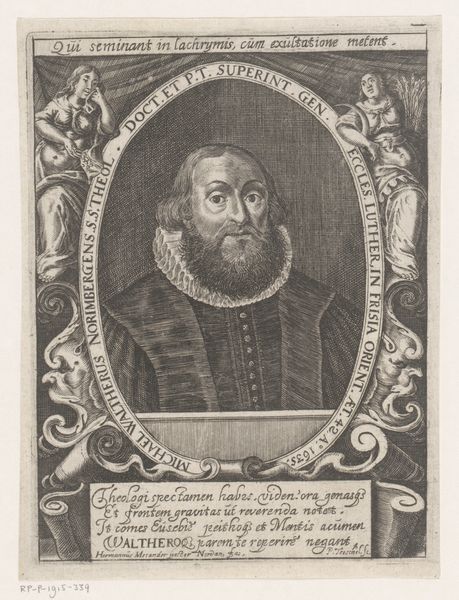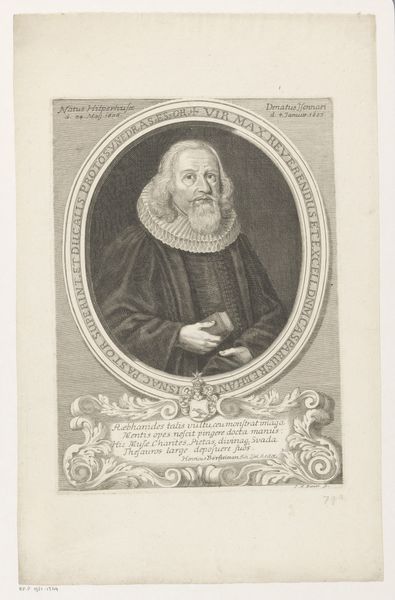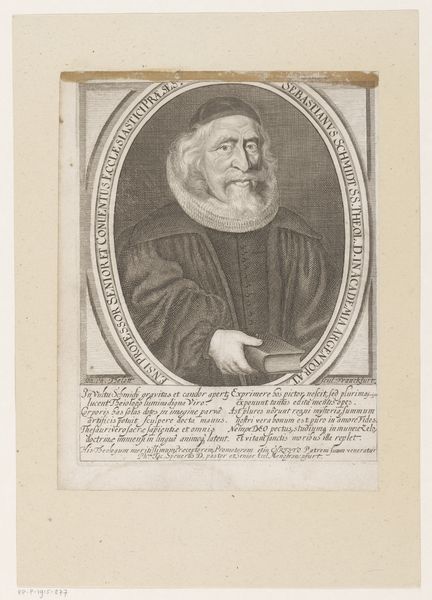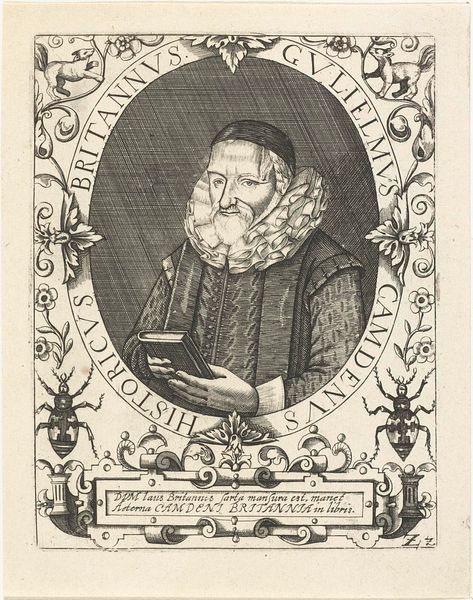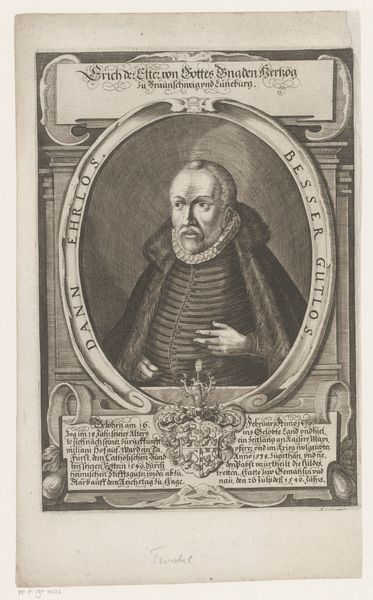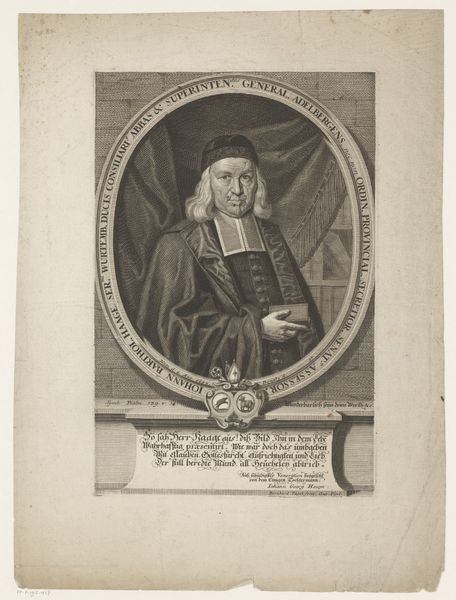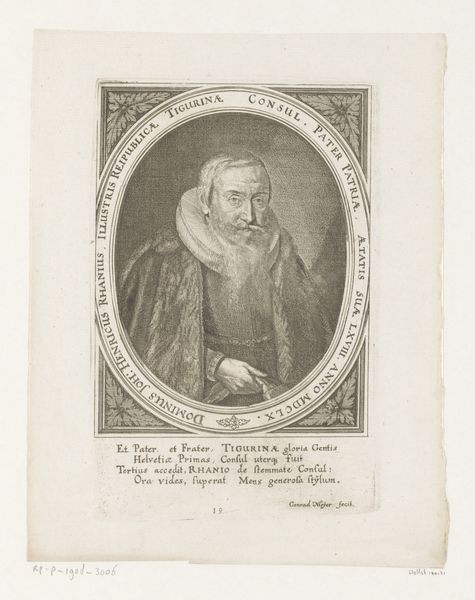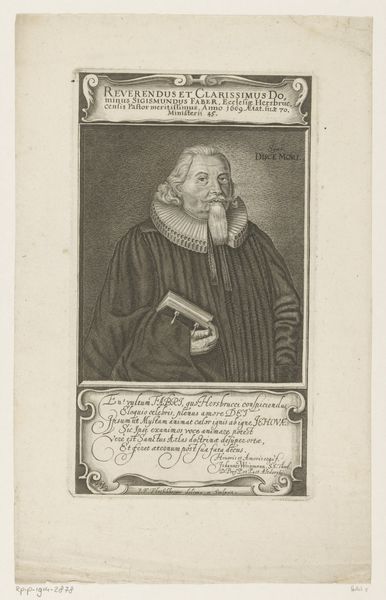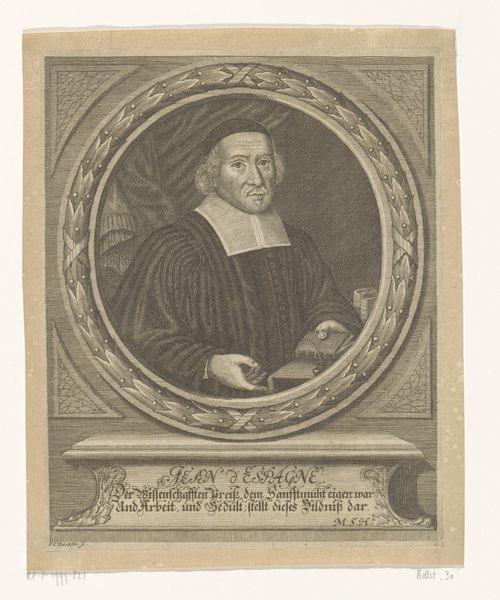
engraving
#
portrait
#
baroque
#
history-painting
#
engraving
Dimensions: height 162 mm, width 90 mm
Copyright: Rijks Museum: Open Domain
Curator: Looking at this engraving, I immediately see a sense of somber formality—an almost etched stillness. The meticulous detail suggests a real commitment to representing the sitter with precision. Editor: Indeed. This is a portrait of Sebastian Schmidt, a theologian, created between 1685 and 1696 by Johann Friedlein. Notice how the details are used to construct more than just an image. Curator: Precisely. Take, for instance, the oval frame of foliage enclosing Schmidt; the leaves give it a distinct structure that isolates him but softens the sharp angles and geometric rigor that define the plaque beneath. The overall effect feels carefully constructed. Editor: And consider the symbolic weight! He is holding what appears to be scripture, open to view. This deliberate presentation is less about personal likeness, and more about communicating his professional identity, his devotion. Curator: The choice of medium is telling too. The graphic nature of engraving, with its stark contrasts, lends itself well to conveying authority and clarity. The use of the hatching method to delineate form and volume and the very precise linework add an almost didactic aspect to the presentation. Editor: This format also has precedents; the circular, contained format may well allude to earlier forms of symbolic portraiture, the laurel implying success, wisdom or skill, a classical framing for what might otherwise simply be a portrait. Curator: The lower plaque also adds weight—another visual tier contributing to the work's rather vertically assertive arrangement. This gives an impression of learned gravitas and reinforces the authority projected by Schmidt's confident, though kindly, visage. Editor: This portrait underscores how prints and engravings weren’t merely reproductions; they were cultural artifacts laden with significance. This image carries history and memory; each element—from the text he presents to the classical forms, contributes layers of meaning for the discerning viewer. Curator: Considering its graphic precision and hierarchical composition, the portrait seems very much aligned with the intellectual climate of its time. Editor: It really invites us to consider the role of the sitter as well as the formal devices to represent and perhaps enhance status, accomplishment, and commitment to particular beliefs and actions.
Comments
No comments
Be the first to comment and join the conversation on the ultimate creative platform.
